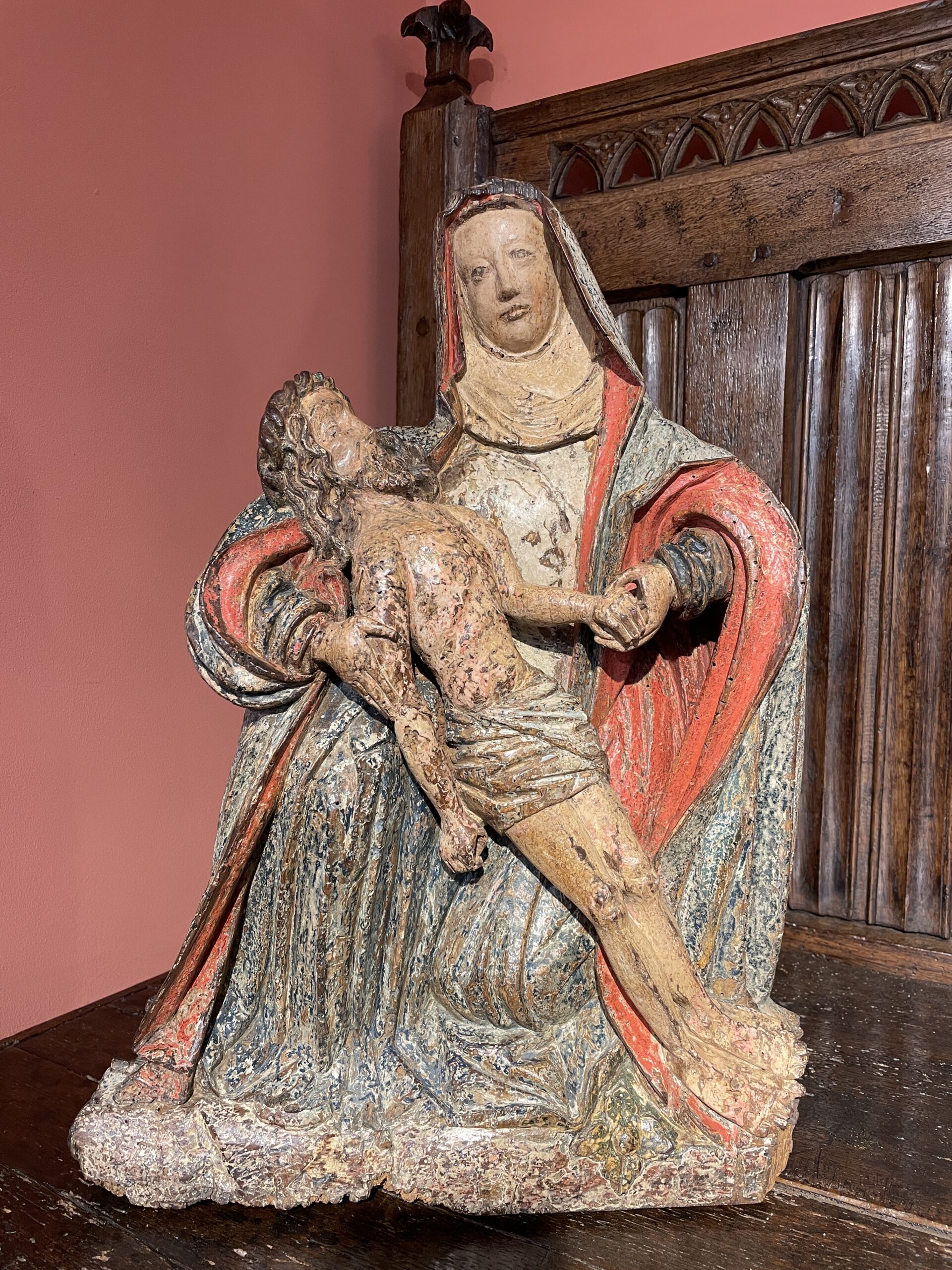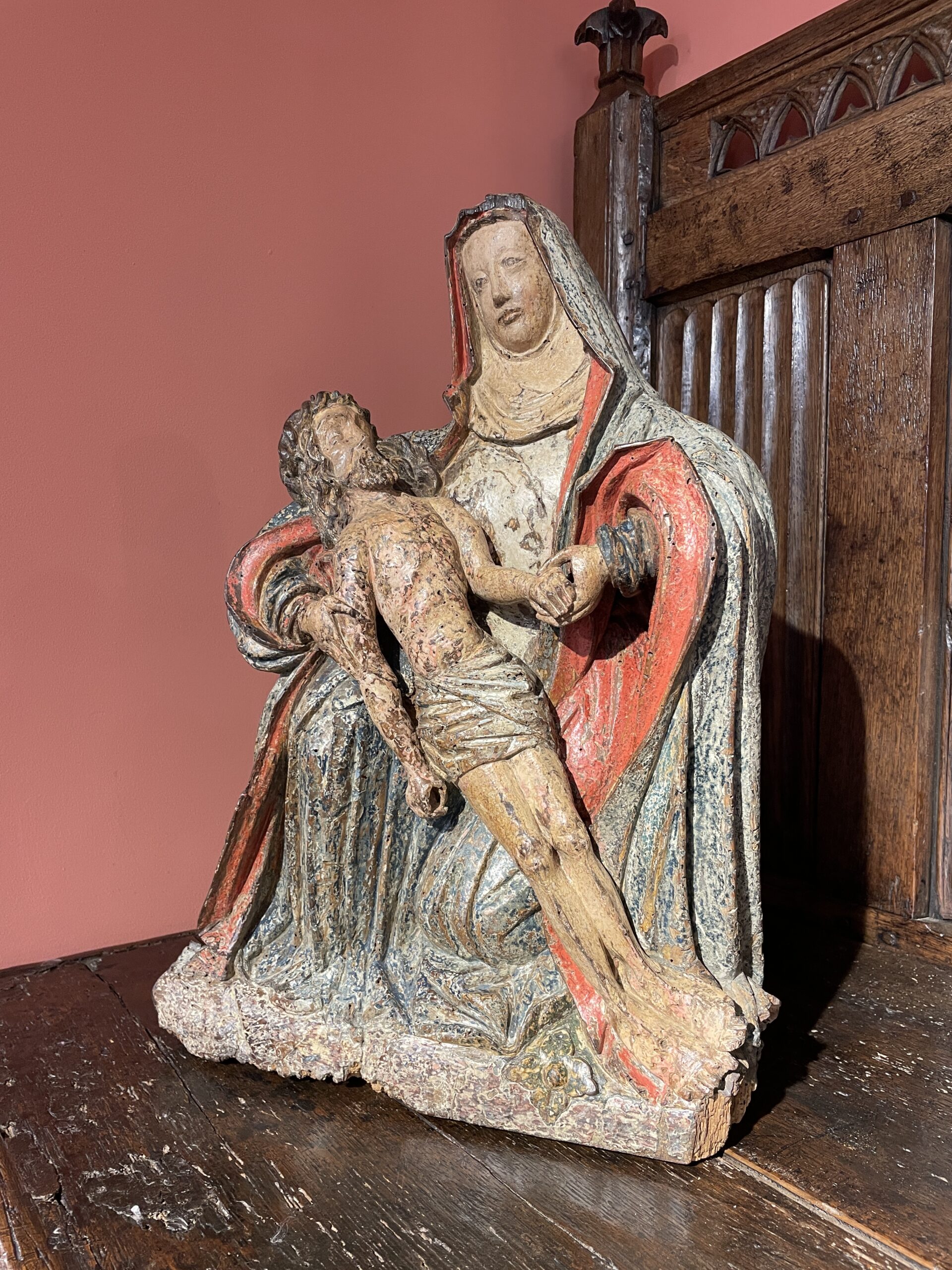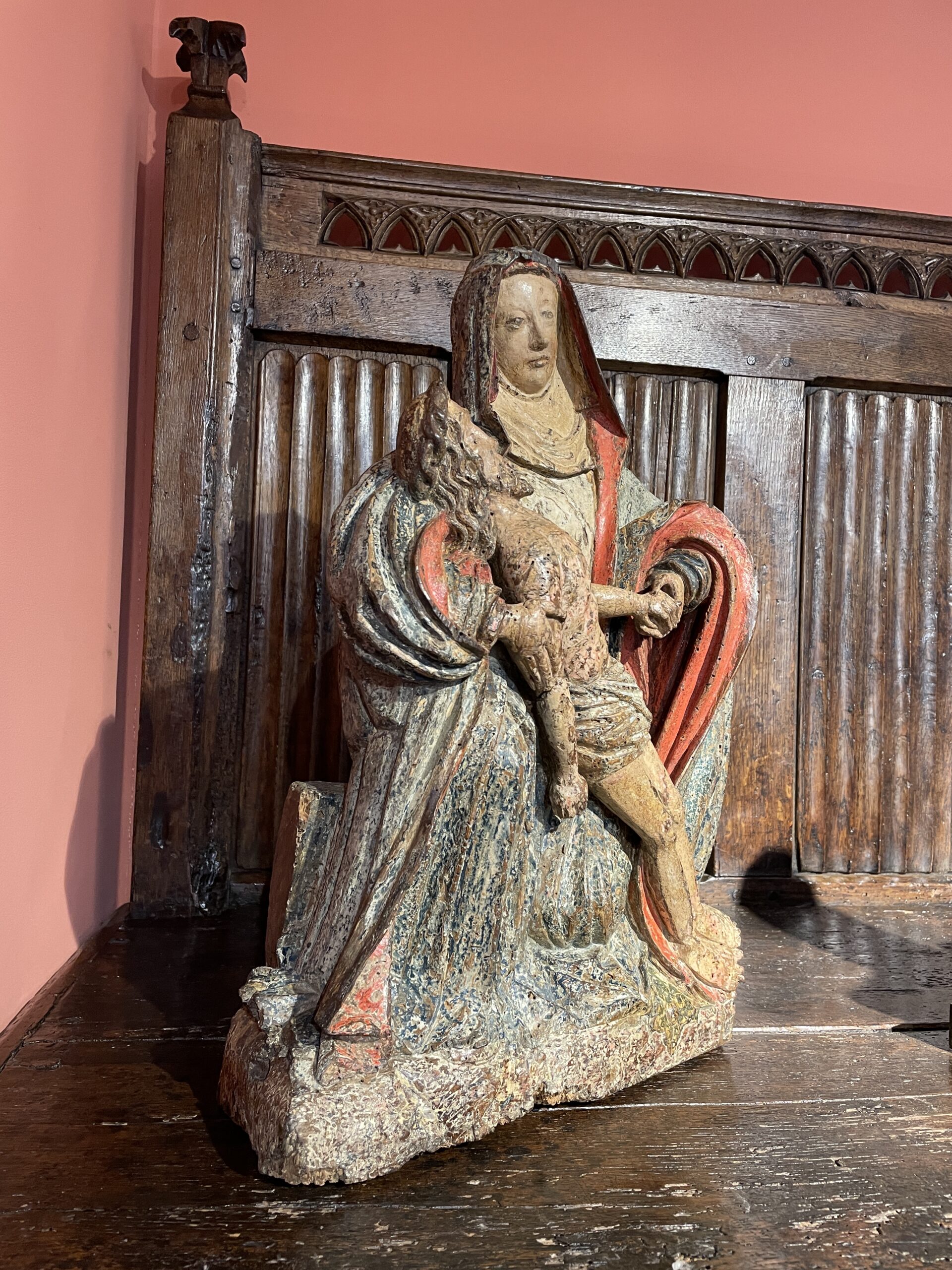Description
ICONOGRAPHY
In the middle of the 14th century, a great current of mysticism appeared in the Rhine Valley, widely disseminated by Franciscan thought. The pathos of the Middle Ages then gives a prominent place in its iconography to themes that are neither outlined in the Gospels nor derived from official worship, but which find their origin in the apocryphal Gospel of Nicodemus.
This introduces Mary, announcing her as present at the burial of her son and attributes words to her that constitute a true threnody (Lat. threnus: elegies) resting largely on the prophecy of the old man Simeon. This apocryphal work inspired the melodies and homilies of George of Nicomedia who, from the end of the 9th century, further clarified the painful character of this threnody.
It is essential to revisit these texts in order to relativize the importance generally given to the later writings of the mystics of the Rhine Valley in the genesis of these groups. Some wrongly considered them to be exclusively born from the meditations and visions of Blessed Suso and Saint Bridget. The mystics only took up and exacerbated this theme already well known to illuminators and master glassmakers.
In this field, images preceded sculptures by several centuries. And the oldest ones are of Byzantine type, respecting the burial gestures of the apocryphal Nicodemus.
The Pietàs began to develop in sculpture before the end of the 14th century. In Germany, they emerged at the beginning of the 14th century, in the convents of mystical nuns of the Upper Rhine Valley as part of the “Vesperbilder” or Vespers images (Vespers, from five to seven, corresponding to the descent from the cross).
In France, the oldest would be that executed by Claus Sluter for the Chartreuse of Champmol; it was then accompanied by two angels following Byzantine iconography.
Most of these groups were created during the 15th century, and their creation was encouraged by the proliferation of Confraternities of Our Lady of Mercy.
DESCRIPTION
The Virgin Mary is depicted seated on a throne holding the body of Christ on her right knee. The heavy fabric of her sky blue cloak, red on the inside, covers her entirely, from head to toe, giving her a great power. On her delicate face, surrounded by a white guimpe, the lowered eyelids reveal painted eyes, a fine and well-defined nose, thin lips, and a small chin free from its chin strap. A gentle melancholy crosses her face.
On her right knee, she carries her son’s body in a true diagonal, supporting him with her right arm. The dead Christ is clothed in a short blue perizonium, typical of the 15th century. One of his arms is held by the Virgin along his body, while she takes his left hand in hers.
He wears the crown of thorns on his abundant hair. His face with closed eyes bears a small beard. His expression seems peaceful, without any trace of pain.
The folds of the clothing and the gentle harmony of the expressions are a perfect reflection of German sculpture of this period.



